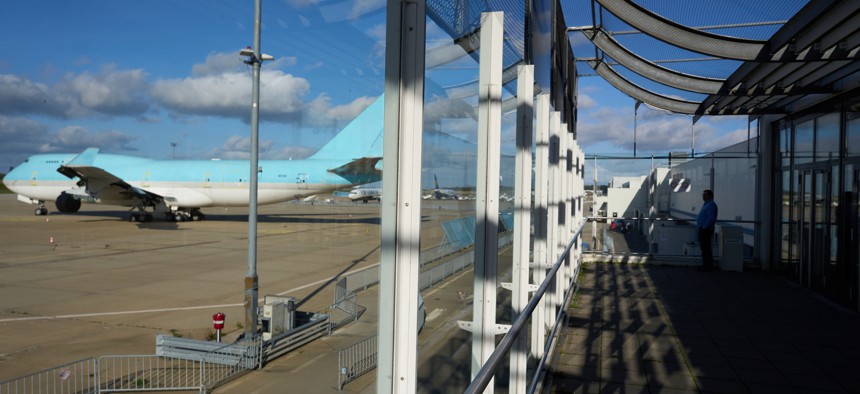
02 November 2022, Rhineland-Palatinate, Hahn: A Boeing 747 cargo plane stands on the apron of Hahn Airport. Photo by Thomas Frey/picture alliance via Getty Images)
NASA, Northrop Drawing Up the Future of Drone Cargo Jets
Before pilotless airlifters can deliver your packages, the government needs to model how they’ll interact with everything else in the air.
The military has used drones to carry cargo and supplies since the first K-Max flights over Afghanistan in 2011. But integrating unmanned aircraft into commercial airspace has been a much bigger challenge. Weapons maker Northrop Grumman is working with NASA to develop the architecture to allow fleets of drone cargo jets to criss-cross America’s skies.
It’s part of the Pathfinding for Airspace with Autonomous Vehicles project, which itself is part of NASA’s Air Traffic Management-eXploration, or ATM-X, effort. The goal isn’t to create a new cargo drone but to model what an entire network of cargo jets would look like and how they would operate alongside passenger and other crewed aircraft as part of the U.S. National Airspace System, the planes, airports, radars, etc., that operate in the country’s airspace.
“What we're doing this for is to implement an architecture and a framework that becomes the policy for how uncrewed 767s at FedEx and Amazon and everybody will do things,” said Richard Sullivan, Northrop’s vice president of future programs.
Northrop and NASA aim to identify “operational gaps, and the particular policies and standards that will need to be created in order to enable autonomous flight,” Randy Wilis, a senior policy advisor at Northrop Grumman, told reporters on Wednesday.
Read that to mean drawing up a basic concept of what unmanned cargo jets will and won’t do when they interact with other jets on runways, human controllers, or something unexpected, like debris or obstacles. While individual aircraft makers may each have their own autonomous software that answers those questions for a particular type of aircraft, the FAA will want a common set of standards and policies to govern all unmanned cargo jets—in essence, an architecture that all future unmanned cargo jets can use, regardless of who makes or flies them.
To figure out what that architecture should look like NASA needs to do extensive modeling and testing based on real-world scenarios, which is where Northrop comes in. The weapons maker has a long history in unmanned military aircraft, most notably the X-47B, a prototype drone fighter that could autonomously fly, land on the deck of an aircraft carrier, and refuel in the air.
Said Sullivan, “there are some complexities there that need to be met and understood, and additionally, contingency management. So with the airframes that are unmanned or uncrewed…that computer logic needs to be compatible with the existing airspace structure and rules that are in place today. So they can be predictable, both to air traffic and to the other pilots that are in that particular area.”




